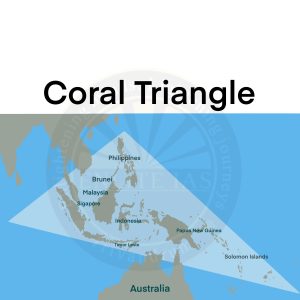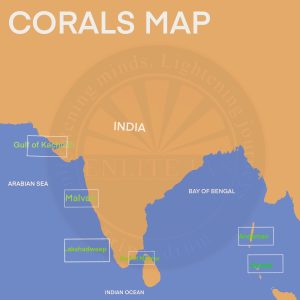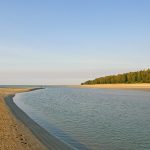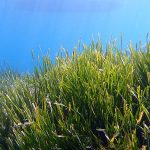What is it?
- Corals are calcareous rocks, formed from the skeletons of minute sea animals, called polyps.
- The polyps extract calcium salts from seawater to form hard skeletons which protect their soft bodies.
- The corals live in colonies fastened to the rocky seafloor.
- Corals are an example of symbiotic relations which live with algae called zooxanthellae.
- Example: Great Barrier Reef
Ideal Condition for Growth
- Corals thrive in tropical waters-between 30°N and 30°S latitudes.
- The ideal depths for coral growth are 45 m to 55 m below sea surface, where there is abundant sunlight available.
- The temperature of water should be around 20°C.
- Clear salt water is suitable for coral growth.
- Adequate supply of oxygen and microscopic marine food, called plankton, is essential for growth and existence.
Types of Corals
- Fringing Reefs: Fringing reefs evolve and develop near the continent and remain close to the coastline. These reefs are separated from the coastline by small, shallow lagoons. They are the most commonly found reefs in the world.
- Barrier Reefs: Barrier reefs are found offshore on the continental shelf. They usually run parallel to the coastline at some distance. A deep and wide lagoon is located between the coastline and the barrier reef.
- Atolls: Atolls are formed on mid-oceanic ridges. They are shaped circularly or elliptically and are surrounded by seas on all four sides and have shallow waters in the center called a lagoon.
Threats for Corals
- Climate Change
- Pollution
- Overfishing
- Coastal Development
- Tourism and Recreation
- Invasive Species
- Diseases
- Global Shipping
Coral Triangle

Coral Distribution in India



